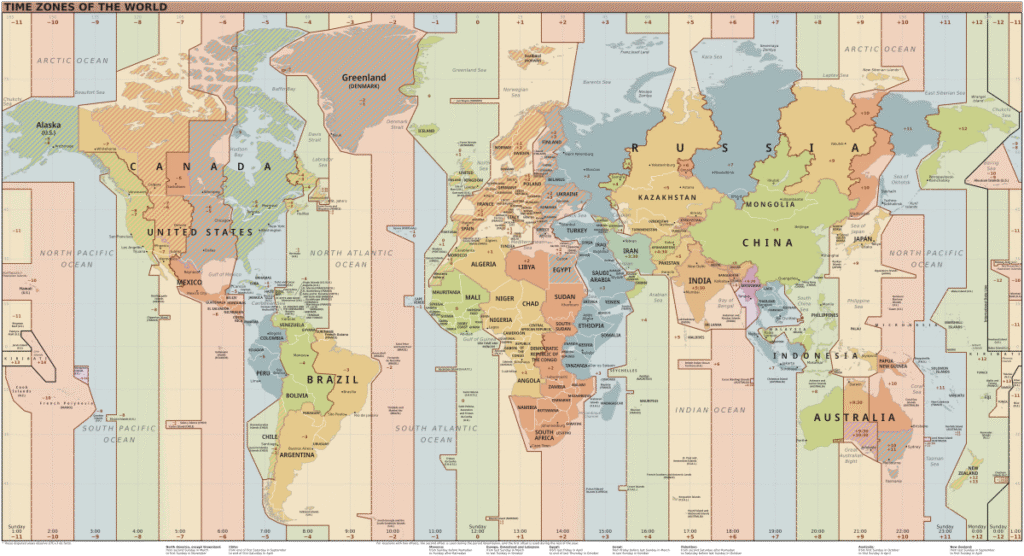Time zones are a fascinating yet practical solution to a world that revolves around one sun but encompasses multiple regions with vastly different local times. From conducting international meetings to planning travel or managing remote teams, understanding how time zones work is essential in today’s interconnected world. This blog post dives into why time zones exist, how they are determined, their impact on global activities, and tips to manage them effectively.
What Are Time Zones and Why Do They Exist?
Time zones are essentially regions of the Earth where the same standard time is observed. They help align human activities with the position of the sun, ensuring “noon” corresponds roughly to when the sun is highest in the sky.
Before time zones were adopted, towns and cities used local solar time, resulting in significant confusion. For example, noon in one city could differ by several minutes or even hours from the next city’s noon. This discrepancy became unmanageable with the advent of railroads and global communication systems that required precise time coordination. To resolve this, the concept of standardized time zones was introduced.
The world is now divided into 24 primary time zones, each roughly corresponding to a one-hour difference in time, based on the Earth’s 24-hour rotation. Some regions use half-hour or even quarter-hour offsets, adding a layer of complexity, but the fundamental goal remains simplicity and organization.
How Are Time Zones Determined?
Time zones are based on the Prime Meridian and Coordinated Universal Time (UTC). Here’s a closer look:
The Role of the Prime Meridian
The Prime Meridian, located in Greenwich, England, serves as the starting point, or 0 degrees longitude, for measuring time zones. This imaginary line divides the Earth into the eastern and western hemispheres and forms the basis for Greenwich Mean Time (GMT), which has been replaced for most purposes by UTC.
Coordinated Universal Time (UTC)
UTC is the global time standard used as the baseline for defining time zones. Every time zone is expressed relative to UTC as either being ahead (+) or behind (-). For example:
- New York operates on UTC-5 during Standard Time.
- Tokyo operates on UTC+9.
Daylight Saving Time (DST)
Some regions adjust their clocks for Daylight Saving Time, shifting one hour ahead during warmer months to maximize daylight. This seasonal change adds to the complexity of calculating time differences between regions but is structured around local practices and energy-saving goals.
Legal and Political Boundaries
Time zones are not strictly determined by geography but also by political boundaries. Countries often customize their time zones for economic, social, or cultural reasons, leading to variations that defy geographical expectations. For instance, China spans five geographical time zones but observes only one national time zone.
The Impact of Time Zones on Global Communication and Travel
Time zones significantly influence how we connect and coordinate across distances. Here’s how they make or break global activities:
1. Global Communication
Businesses and individuals must account for time zone differences when scheduling international meetings or collaborating across countries. For example:
- A team in San Francisco (UTC-8) may need to adjust its schedule to meet colleagues in London (UTC+0).
- Misunderstandings about time conversions can result in missed meetings or delays, especially when Daylight Saving Time comes into play.
Technological tools like scheduling assistants and shared calendars have made it easier to address these challenges by automatically adjusting for time zone differences.
2. International Travel
Time zones are integral to air travel, affecting flight schedules and travel planning. Crossing multiple time zones during long-haul flights can lead to jet lag, as your internal clock struggles to adjust to the new local time. For instance:
- Travelers flying from Los Angeles (UTC-7) to Paris (UTC+1) encounter an eight-hour time difference, which can disrupt sleep patterns and energy levels.
Jet lag management strategies, such as gradually adjusting your sleep schedule before traveling, can help.
3. Economic and Cultural Connections
Time zone differences influence not just business operations but also live broadcasts of sports, entertainment, and global events. For example, a live-streamed concert in London may air during the middle of the night for viewers in New York, requiring thoughtful scheduling or on-demand options to cater to diverse audiences.
Tips for Managing Time Zone Differences Effectively
Whether you’re organizing a team meeting with colleagues spanning several continents or planning a trip abroad, managing time zone differences is a critical skill. Here are some practical tips to help you stay on top of it:
1. Use Time Zone Conversion Tools
Leverage online tools like time zone calculators or mobile apps that automatically convert times for various locations. Tools like World Time Buddy or apps like Google Calendar can simplify scheduling by showing all participants’ local times.
2. Set a Standard Time
For remote teams, establish a standard reference time for meetings, such as using UTC or the time zone of your company headquarters. This minimizes confusion and ensures everyone knows the baseline.
3. Be Mindful of Work Hours
When scheduling international meetings, consider participants’ local time zones and time of day. Try to find a compromise that doesn’t require anyone to attend during unreasonable hours, even if it means rotating meeting times occasionally.
4. Plan Ahead for Daylight Saving Time
If working with countries that observe Daylight Saving Time, make a note of when the changes occur. This will help you adjust schedules accordingly and avoid potential disruptions.
5. Communicate Clearly
When sharing time-sensitive information, always specify the time zone. For instance, instead of simply saying “Meeting at 3 PM,” say “Meeting at 3 PM EST (UTC-5).”
Final Thoughts
Time zones are a testament to humanity’s ability to adapt to the complexities of our planet. They help us structure our days, facilitate communication, and connect with others globally. While managing time zone differences can sometimes feel challenging, understanding the basics and using modern tools makes it much easier.
By keeping time zones in mind and following simple strategies, you can collaborate seamlessly across borders, enjoy smooth travel experiences, and avoid unnecessary confusion. Mastering this skill is more important than ever in our increasingly globalized world!


